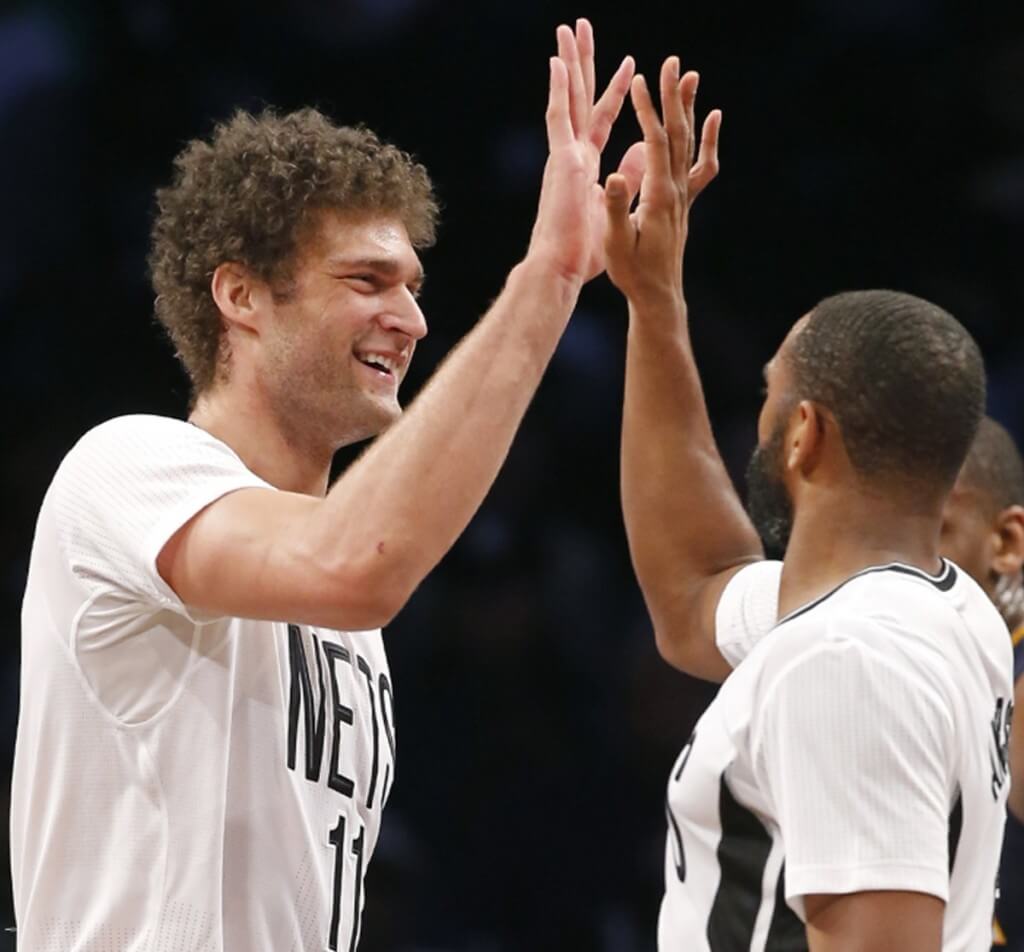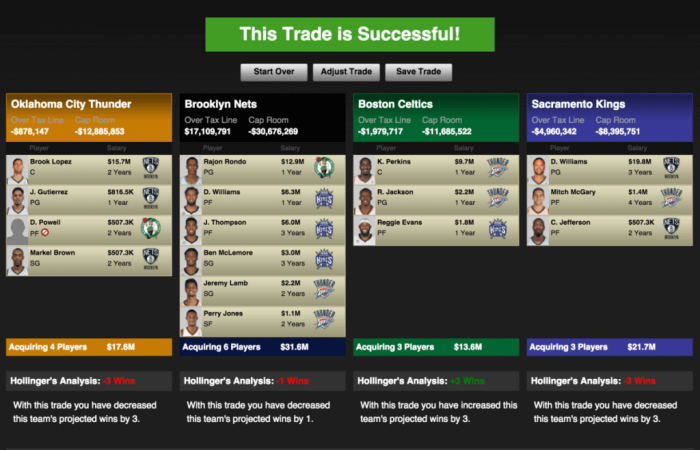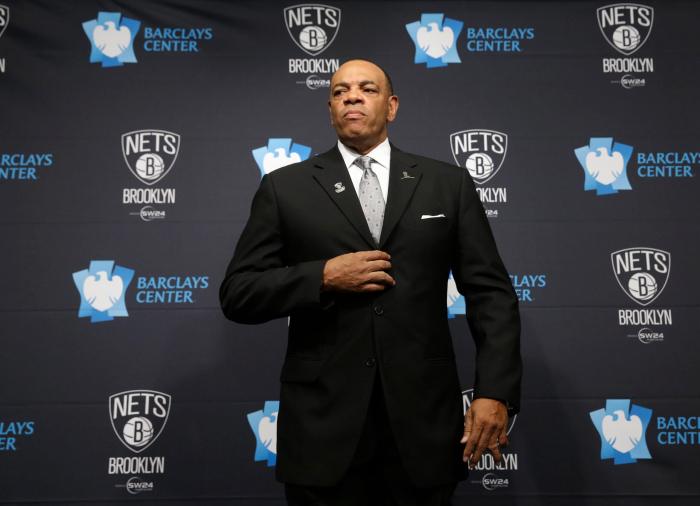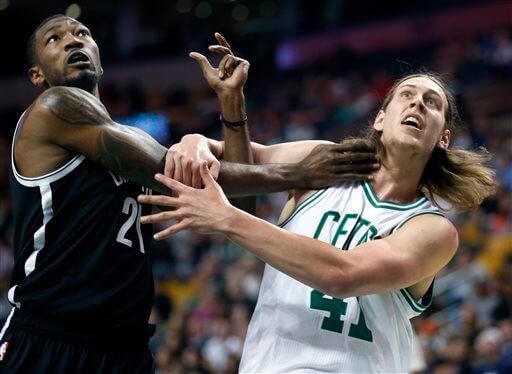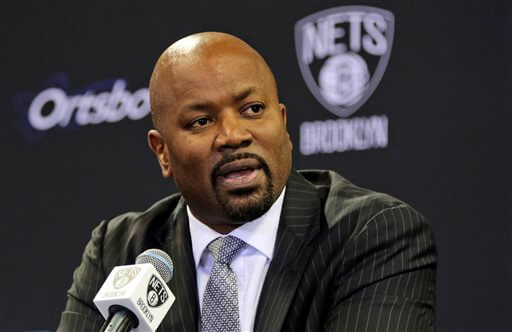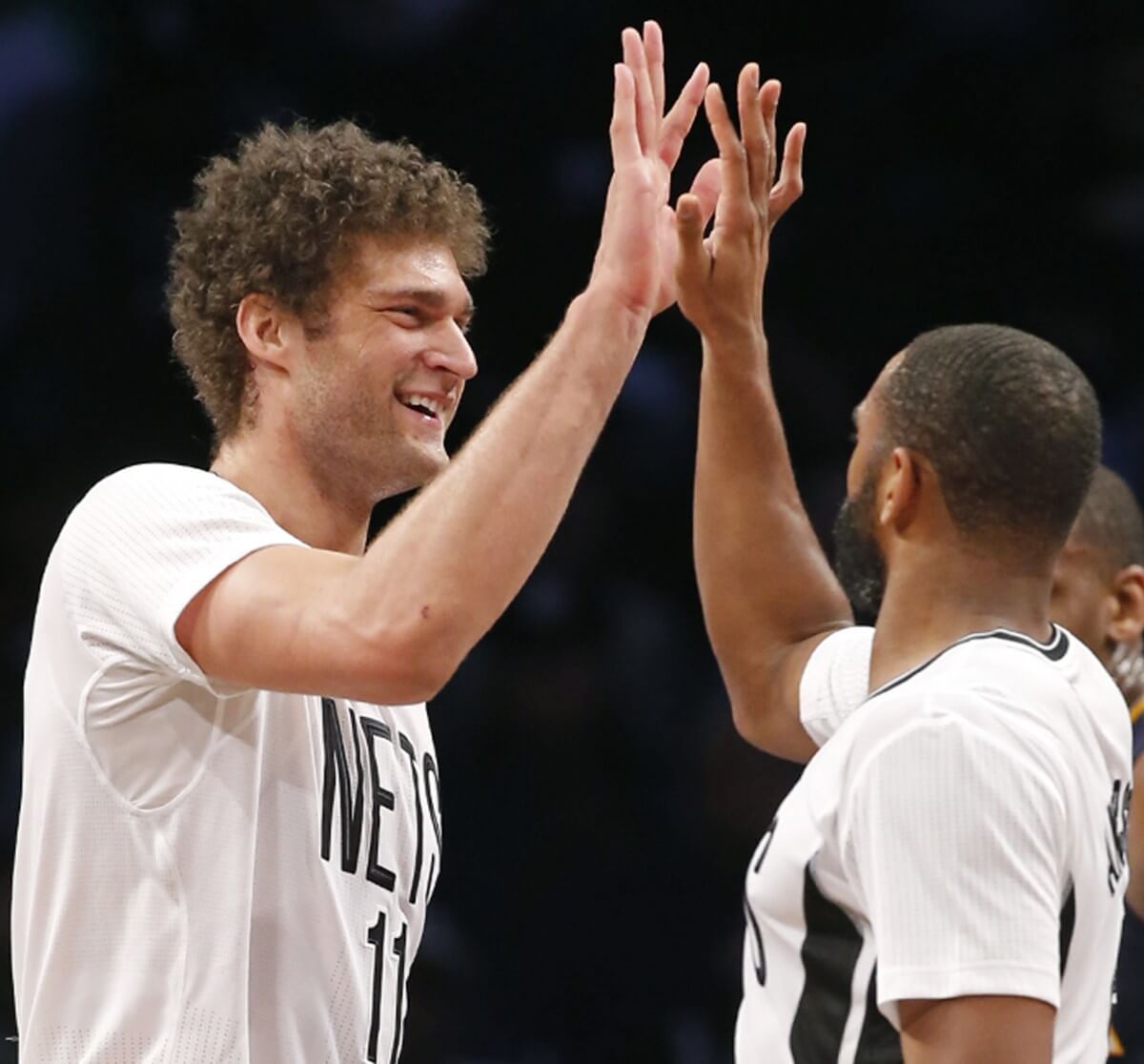
So, let’s get one thing out of the way: the Nets were thoroughly dismantled Saturday night by the Atlanta Hawks, a team that might present their worst matchup in the Eastern Conference. They were on the second half of a back-to-back and their fourth game in five nights; the Hawks were on three days rest and had only played their starters 24 minutes each against Detroit. It wasn’t so much a complete blowout as it was an early one: the Hawks took a double-digit lead early and never looked back, and the Nets looked resigned to their fate.
So look past that fallen tree and focus on the forest. Four weeks ago, the Nets were 25-38, prompting some dumb writers to wax poetic on what seemed like their inevitable demise. Today, they’re the seventh seed in the Eastern Conference.
We should’ve known. Just like last year’s zombie Nets rose from the ashes after January 1st to sneak into the second round of the playoffs, this year’s went on a tear after that nadir, winning 10 of 12 games and fighting four other teams for one of two playoff spots.[note]Maybe six teams for three spots, if the Milwaukee Bucks slide further.[/note]
There’s an element of good fortune to all this: teams just don’t go 10-2 in a 12-game stretch while only outscoring opponents by two points per game without some luck. Six of those wins came down to the final few possessions; a Cleanthony Early heave landing square or a Giannis Antetokounmpo post-up going the other way puts the Nets on the outside looking in at the playoffs. Throw in some favorable matchups[note]The Raptors without Kyle Lowry, the already-tanking Lakers & Timberwolves with only eight active players come to mind.[/note], and you’ve got the team’s best stretch of the season by a long shot.
This isn’t to deny how well the Nets have played — they’ve won these games! That’s good! — but a reminder that basketball is an incredibly fickle and weird sport, and it often comes down to putting yourself in the right position to succeed and hoping things go your way.
Here’s what’s in the right position, and what’s not.
The Brook Lopez Effect
It all stems from Brook Lopez, and unless you’ve been living in a basement apartment in Downtown Brooklyn without a TV because your rent takes up 80% of your paycheck, you know this already. Lopez has exploded in the past two months, averaging 19.5 points, 9.3 rebounds, and 1.9 blocks per game since the All-Star break, on a tick under 53% shooting. He’s rebounding on the offensive glass at a ridiculous rate, grabbing 4.2 offensive rebounds per game and 14.7 per 100 possessions since the break, and turning them into second-chance points.
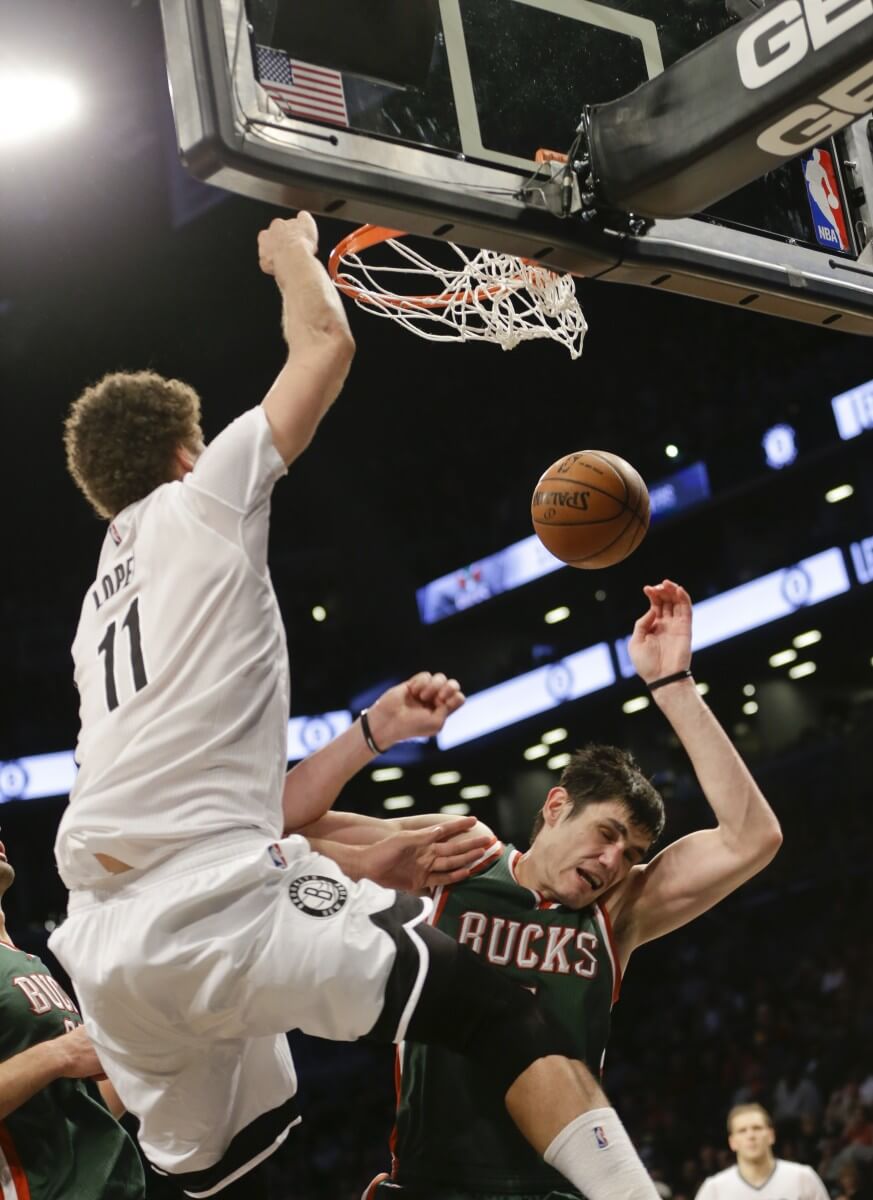
Both he and Lionel Hollins cite a conversation on February 6th as the turning point. “For me, I understood that he wasn’t going to be a dominant post-up player, and that we had to play differently with him to be effective,” Hollins said. “I just told him, ‘I’m not going to try to make you somebody you’re not, just be who you are.'”
RELATED: Brook Lopez’s Major Contract Decision Looms For Nets
The proof’s on the court. Lopez’s ball screens per game and team points per possession on plays when he sets one have both shot up since February 6th, from 18.8 per game and 0.98 PPP before to 23.2 per game and 1.06 PPP since, according to data provided to The Brooklyn Game from STATS LLC.[note]Those official stats are through Thursday, though not much has changed in the two games since.[/note] His biggest threat in the pick-and-roll has been his quick release and soft touch on short floaters: if any of his driving teammates finds him in his sweet spot about eight feet in front of the rim, there’s really nothing an adjusting defense can do.
Both of those plays above are as simple as they get: big man trails the point guard, sets up a high pick-and-roll in the middle of the floor, big man sets solid screen, point guard draws attention, finds big man for the short push shot. Williams and Lopez have clicked into something in the past two months, and they know it.
“I don’t know if we’ve found something, but it’s just getting used to having D-Will and myself on the same page again,” Lopez said after the Nets beat the Lakers Sunday afternoon. “It’s something we’ve had before.”
He’s also getting more shots directly at the rim, up to 6.5 per game since February 6th, as opposed to 4.9 before.[note]His minutes have also gone up, but he’s still getting more shots at the rim in general: 7.5 per 36 as opposed to 6.4.[/note] He gets most of these bunnies either by consuming offensive rebounds at this weird historic rate he’s on, or screening and rolling for layups and dunks. You can see the latter clearly on this play: Lopez is just begging to run a pick-and-roll with Williams, going to him three times (the first as the video starts), eventually getting things to click and rolling for an and-one layup.
Lopez’s strength is in his length: there just aren’t many big men that can match Lopez’s 7’2″ frame[note]He’s listed at seven feet, which would be true of him if he had five more feet.[/note] and 7’6″ wingspan. When he’s inside against the 6’9″ Tarik Black, there’s really not much Black can do except headbutt him in the stomach, which I’m pretty sure is illegal.
He’s still getting his post-ups, he’s just getting fewer of them, and have turned his post-ups from the focal point of the offense to quick plays where Lopez just turns and fires with deep paint position. Earlier in the season the Nets would force the ball to Lopez and just watch him work; now there’s more movement in the offense, which includes Lopez.
The questions are always there. This is a league that loses iconic big men to ugly foot injuries all too often, and one wrong turn or fall could end Lopez’s career. But if the fear is always there, it’s because there’s something to lose, and right now Lopez is playing the best basketball of his career.
Deron Williams Is Alive
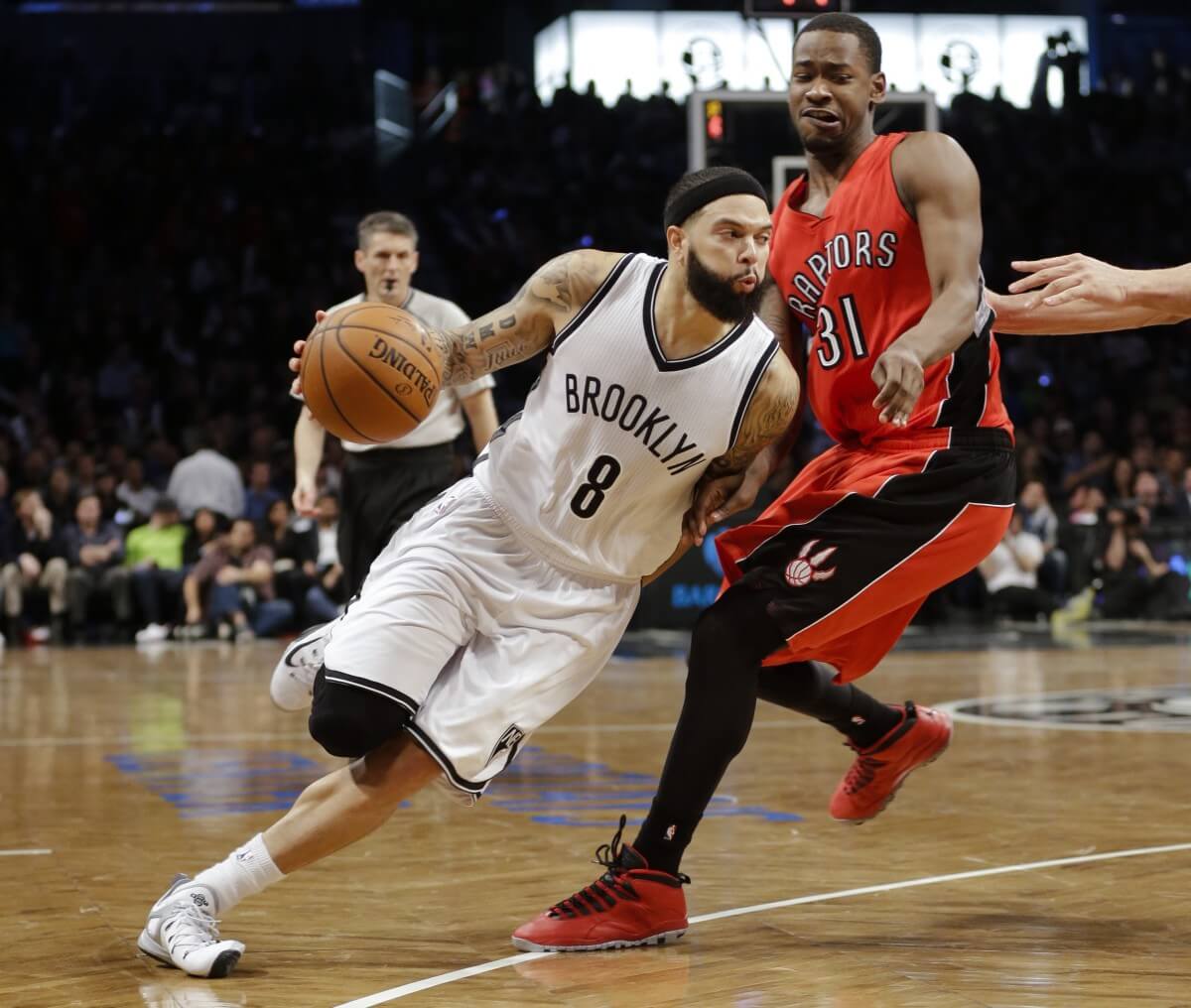
The Zombie Nets’ fearless leader. Right when we’re all convinced Deron Williams has exhaled his last gasp of greatness, he strings together his best performances of the season: a 26-7-7 performance against the New York Knicks and a 31-11 night against the Toronto Raptors two days later. The Nets only won those games by a combined seven points, but Williams was a +42 over the two games. They built leads with Williams in, and lost them with him out.
The caveat: The Knicks are a basketball team largely for show at this point, and the Raptors were without point guard Kyle Lowry, so the circumstances were certainly in his favor. There’s still an impressive bounce to Williams’s game lately: he’s hitting open threes, barreling into the lane in one-on-one looks and in pick-and-rolls, and finding open teammates when he makes defenses adjust.
This kind of play hasn’t been a consistent part of Williams’s repertoire: he matches up with Avery Bradley, not a poor defender by any measure, and blows past him, drawing the help from Tyler Zeller and whipping a pass for Lopez for an easy and-one layup.
Williams has also mastered the “pocket pass” with Lopez, a quick bounce pass off the pick-and-roll into the lane in between their defenders. It often comes off a screen-and-roll from the wing, with Williams receiving a handoff or a quick pass from a teammate mid-stride:
With these two clicking, Hollins needs to play Deron Williams right up until the point when the wheels fall off. That was on full display during this past Friday night’s win over the Raptors; Hollins kept Williams in the game for the final 24 minutes, electing to keep struggling backup point guard Jarrett Jack on the bench.[note]More on this dynamic later.[/note]
With Williams, the risk is that his body or mind will repel him from the basket, and he’ll struggle to make a big impact again. But this is the Williams the Nets have at this point, and if he keeps this level of production up, they’ll make do.
The Thaddeus Young Train
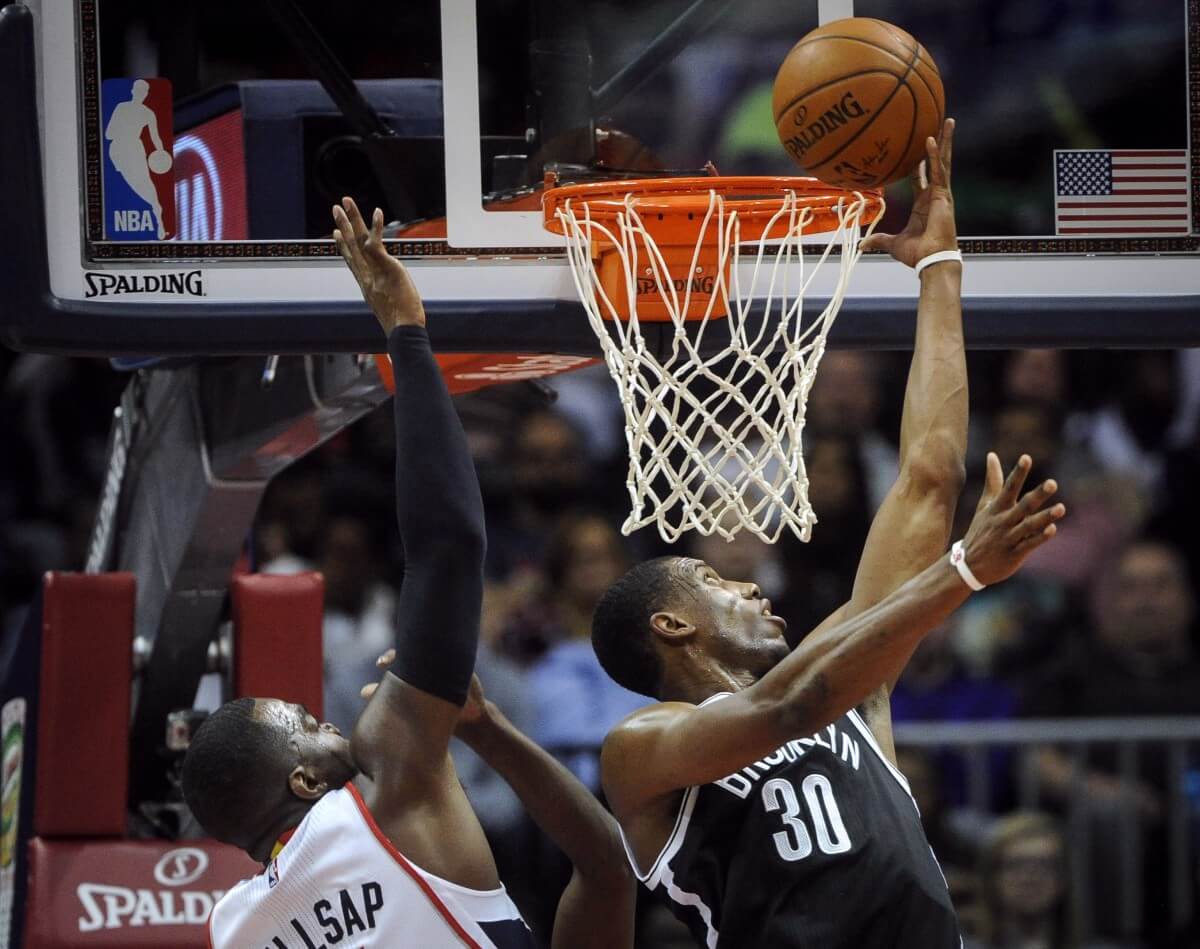
Hop on the Thadwagon before it ducks under you before floating a lefty hook over your outstretched arms. You’ve been warned.
Young still has his athleticism — here’s proof positive — but he’s reserved it for key moments, choosing instead to use his quickness on the floor to cut to the basket and find easy looks.
Young isn’t the communicator or interior defender that Garnett is, but having him in the lineup helps the Nets re-ignite some semblance of last year’s “longball” lineup. “Active hands” is his calling card: Garnett’s exhumed body wasn’t able to guard anyone faster than the average NBA power forward, but Young’s big enough to guard the David Wests of the league, quick enough to switch in a pinch if needed, and dogged in pursuit of loose balls.
The common turn of phrase is that having Thaddeus Young has made Brook Lopez’s life easier. That’s true: Young’s versatility on defense frees up Lopez to stick near the rim, and having Young as a dive man in the pick-and-roll allows Lopez to hang near the rim and gobble those offensive rebounds.
But it’s an equal relationship: with Lopez on the floor drawing in defenders left and right, it’s opened the floor for Young to experiment with different looks on offense, and sneak around defenders who aren’t focusing on him. Just remember that last play against the Toronto Raptors Friday, when Patterson abandoned Young to double-team Lopez on the offensive glass — letting Young slide right in for the tip-in.
He’s not a big-time three-point shooter despite his early hot streak, and he’ll have some issues with bigger players. But in Thaddeus Young, the Nets have finally found the power forward to complement Brook Lopez they’ve been looking for.
The Brooklyn Nets Bench Problem
Joe Johnson and Markel Brown fit in just fine with the starting five. Johnson spaces the floor and occasionally posts up to dominate a smaller defender or set up a teammate for an open shot, and Brown approaches the most harrowing defensive assignments with aplomb & occasionally throws down a stupidly fun dunk.
The lineup is no joke: they’ve outscored opponents by 16.2 points per 100 possessions by “keeping it simple,” as Lionel Hollins has said: limiting turnovers, controlling the offensive glass, and not fouling at inopportune times.
Williams & Lopez could regress at any point, and Markel Brown’s lack of shooting touch is glaring at times, but so far, this has worked. They’re the fourth-best lineup in the NBA since the All-Star break in terms of net rating[note]Minimum 120 minutes.[/note], and the top six is rounded out with championship contenders: the Spurs, Clippers (twice), Cavaliers, and Warriors all join Brooklyn on the list.
But the Nets aren’t contenders, and they’re a mess once they crack into that second unit. The “bench mob” has taken a serious hit since last season: They lost Andray Blatche by choice, Mirza Teletovic by injury, and Andrei Kirilenko by family. Shaun Livingston and Paul Pierce were starters, but they’re gone too, and the Nets could’ve used them to push some of their current rotation players further down the line.[note]The Nets had no shot at retaining Livingston, who bolted for greener and better pastures with the Warriors, and elected not to re-sign Pierce, who would’ve cost them as much in luxury tax payments as the Cavaliers pay LeBron James.[/note]
Jarrett Jack gets the brunt of the blame. His decision-making fluctuates from confusing to maddening in most games:
Jack had two obvious options: find Lopez, who had scored 14 of the team’s 31 first-quarter points in this game, in the post for a mismatch over Luis Scola, or hit Earl Clark on the perimeter, either keying an open three-pointer or scrambling Indiana’s defense on a swing pass. Jack chose door number three:
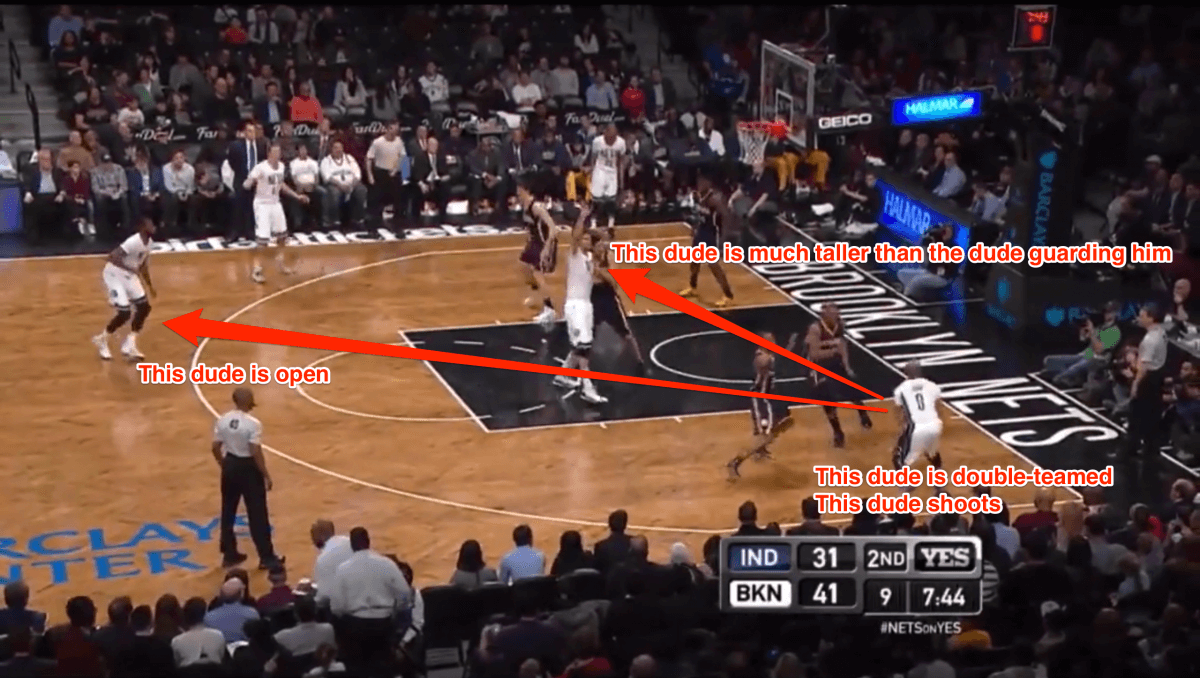
PETA’s going to be called in soon for how we’re treating this horse, but it bears repeating: the Nets have played good basketball with Deron Williams in the game, bad basketball with Jarrett Jack in the game, and worse basketball with both in the game together. This season, the Nets are a +104 with Williams on the court without Jack, -105 with the two on the court, and -218 with Jack running the show without Williams, per NBA.com.
It really is that simple: Even a limited Williams is a plus-decision maker, and Jack is not, and the latter has impacted the former’s production in a bad way.
There’s no immediate solution; you can’t let anyone play 48 minutes a night, much less Deron Williams. But limiting Jack’s stretches to a few minutes at a time in each quarter is a better plan than giving him the keys to the offense for long stretches. It could mean the difference between a third straight year in the playoffs or a pointless trip to the lottery.
But it goes beyond just Jack. Mason Plumlee has hardly looked like the dunk-on-fools-and-play-just-enough-defense-to-get-by center that was deemed untouchable in January. Bojan Bogdanovic has begun hitting shots and is an advanced off-ball cutter, but he’s struggled to stay in front of most NBA-level guards. Cory Jefferson has shown flashes but hasn’t carved out a consistent role all season. The second quarter, which is normally when bench players play the most minutes, has been the worst for the Nets all year.
There are glimpses. Alan Anderson, who has spent the last week screaming “SPARTAN!” to small children and anyone else within earshot of the Tri-State, appears to have finally embraced his position as the Keith Bogans Memorial Role Star Hip Hop: defending, cutting, and hitting open three-pointers while everyone else does the fancy work. Anderson fits in in a pinch when he’s doing little things like this:
And this:
But those come when Anderson plays off the starters, not with the second unit.
The good news for the Nets: teams always play their benches less in the playoffs as games tighten up, and they’ll have a hidden advantage with their successful starters. The bad news: they have to get there first — and when they do, their opponents will play their first unit just as much. That doesn’t bode well for a team already staggering to the finish line.

